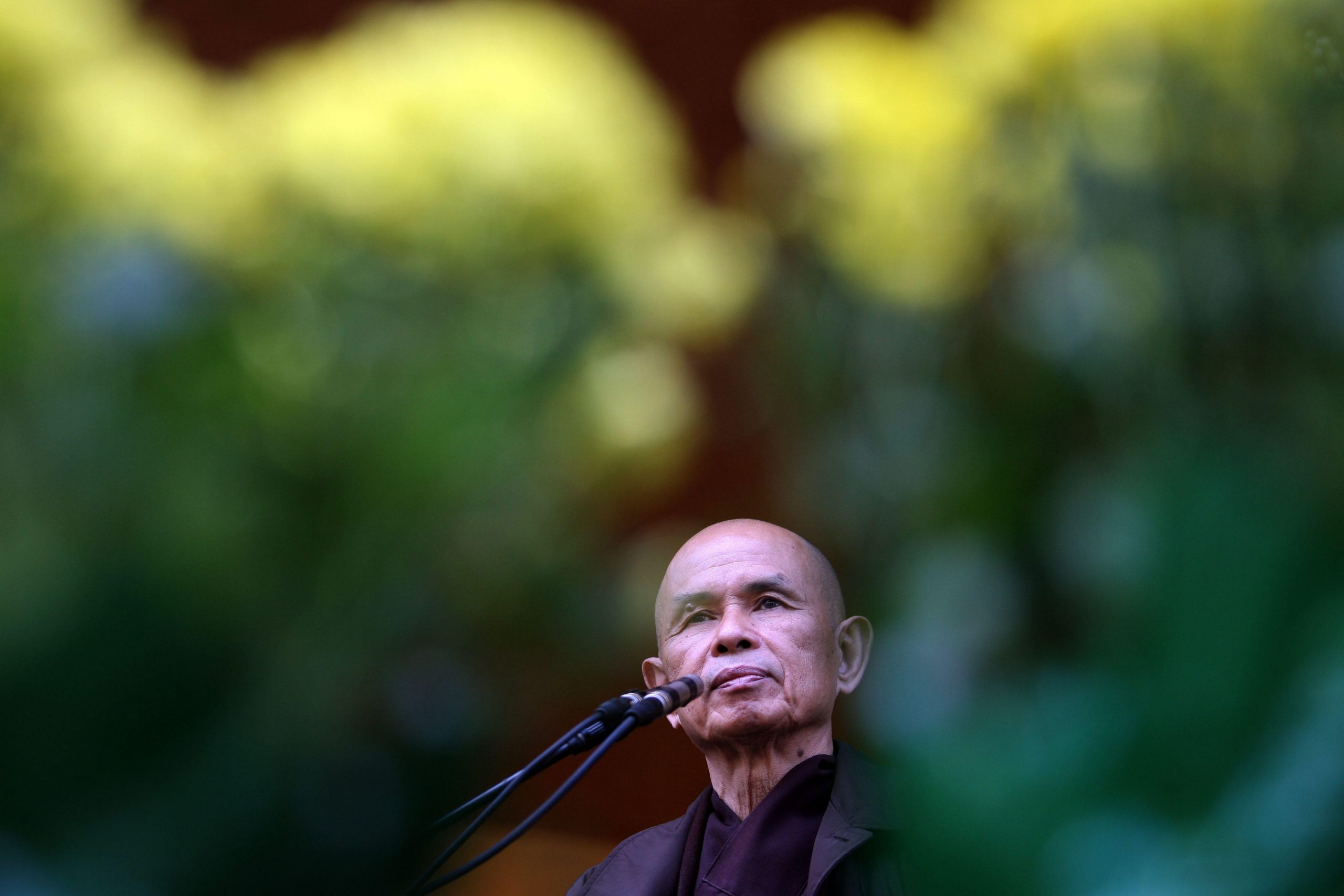These Are Not “Your” Thoughts
Insight meditation teacher Joseph Goldstein explains how to treat consciousness as the object of meditation. The post These Are Not “Your” Thoughts first appeared on Tricycle: The Buddhist Review. The post These Are Not “Your” Thoughts appeared first on...

Meditation Meditation Month 2025
Insight meditation teacher Joseph Goldstein explains how to treat consciousness as the object of meditation.
By Joseph Goldstein Jan 09, 2025 Photo by Caroline Grondin | https://tricy.cl/2HRxpaD
Photo by Caroline Grondin | https://tricy.cl/2HRxpaDIt is important to make thoughts the object of mindfulness.If we remain unaware of thoughts as they arise, it is difficult to develop insight into their impersonal nature and into our own deep-rooted and subtle identification with the thought process. This identification reinforces the illusion of self, of some “one” who is thinking. To meditate upon thoughts is simply to be aware, as thoughts arise, that the mind is thinking, without getting involved in the content: not going off on a train of association, not analyzing the thought and why it came, but merely to be aware that at the particular moment “thinking” is happening. It is helpful to make a mental note of “thinking, thinking” every time a thought arises; observe the thought without judgment, without reaction to the content, without identifying with it, without taking the thought to be I, or self, or mine. The thought is the thinker. There is no one behind it. The thought is thinking itself. It comes uninvited. You will see that when there is a strong detachment from the thought process, thoughts don’t last long. As soon as you are mindful of a thought, it disappears, and the attention returns to the breath. Some people may find it helpful to label the thinking process in a more precise way, to note different kinds of thoughts, whether “planning” or “imagining” or “remembering.” This sharpens the focus of attention. Otherwise, the simple note of “thinking, thinking” will serve the purpose. Try to be aware of the thought as soon as it arises, rather than some minutes afterward. When they are noticed with precision and balance they have no power to disturb the mind.
Thoughts should not be treated as obstacles or hindrances. They are just another object of mindfulness, another object of meditation. Don’t let the mind become lazy and drift along. Make the effort for a great deal of clarity with respect to what’s happening in the moment.
Suzuki Roshi in Zen Mind, Beginner’s Mind writes:
When you are practicing zazen meditation do not try to stop your thinking. Let it stop by itself. If something comes into your mind, let it come in and let it go out. It will not stay long. When you try to stop your thinking, it means you are bothered by it. Do not be bothered by anything. It appears that the something comes from outside your mind, but actually it is only the waves of your mind and if you are not bothered by the waves, gradually they will become calmer and calmer . . . Many sensations come, many thoughts or images arise but they are just waves from your own mind. Nothing comes from outside your mind . . . If you leave your mind as it is, it will become calm. This mind is called big mind.
Just let things happen as they do. Let all images and thoughts and sensations arise and pass away without being bothered, without reacting, without judging, without clinging, without identifying with them. Become one with the big mind, observing carefully, microscopically, all the waves coming and going. This attitude will quickly bring about a state of balance and calm. Don’t let the mind get out of focus. Keep the mind sharply aware, moment to moment, of what is happening, whether the in-out breath, the rising-falling, sensations, or thoughts. In each instant be focused on the object with a balanced and relaxed mind.
Instruction: Consciousness
One of the foundations of mindfulness is consciousness, the knowing faculty. [The four foundations of mindfulness are outlined in the Satipatthana Sutta. The other three are the body’s sense objects, feelings of pleasantness or aversion, and mental qualities.] One way to develop mindfulness of knowing is to treat consciousness itself as the object of meditation. In any movement of the body, you can begin to sense the knowing faculty, because the physical object is so apparent. Relax the mind and try to sense the knowing faculty arising at the same time as the movement. It is important to remember that knowing and the object arise simultaneously. You cannot separate consciousness from the object. But it is possible to distinguish the two processes, to see that the flow of objects is one process and the flow of consciousness is another. They are happening simultaneously, with two different functions. Do not try to pinpoint the consciousness, to precisely define it or limit it. It is a very subtle, immaterial object. But with a relaxed mind, we can begin to sense the process of consciousness. Because it is so subtle an object, it will force the mind to be very attentive. It is impossible to experience clearly if the mind is lax or lazy.
Sometimes in sitting you might turn the attention to the knowing. The breath experienced as the in-out or rising-falling is a material process only. The knowing of it is the mind, consciousness. When you are silent and centered, turn the mindfulness toward the “knowing.” Don’t strain to find it or try to locate it somewhere in the body. Simply be aware in an easy way of the knowing process going on.
One of the factors of enlightenment is investigation of the dharma, which means that investigative quality of the mind which examines, which explores just how the elements of the mind work. Don’t be afraid to use the mind in that way, to investigate. But not with words, not with thoughts, not with concepts. Try to get a feel, a sense of the process of consciousness happening together with the object. This experience brings freedom from identification with the observer. Insight comes from the realization that observation is going on without an observer, witnessing without a witness.
⧫
From The Experience of Insight by Joseph Goldstein © 1987. Reprinted in arrangement with Shambhala Publications, Inc. Boulder, CO. www.shambhala.com
[This article was first published in 2018.]
![]()
Thank you for subscribing to Tricycle! As a nonprofit, we depend on readers like you to keep Buddhist teachings and practices widely available.

 Koichiko
Koichiko 
































